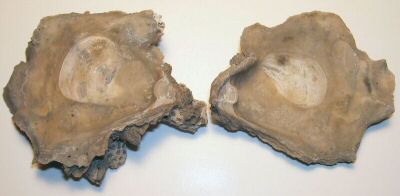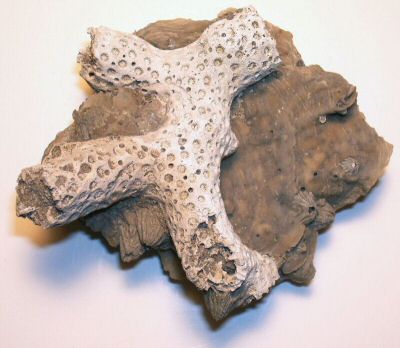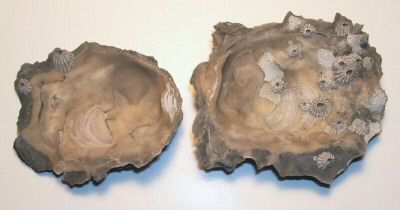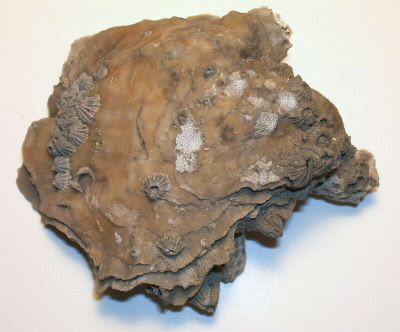Dry Dredgers Field Trip
November 26, 2006
PCS Mine, North Carolina
Pictures and report by Ron Fine
Oysters
Oysters cement themselves to hard surfaces so they won�t be washed away. The top of this oyster made a good home for barnacles and bryozoans who had the same idea.

The inside of this same oyster clearly shows the scars from the muscles that it used to open and close the shell.

The bottom of this same oyster shows the coral on which it cemented itself, as well as more barnacles.

After it died the two shells from this oyster stayed together, providing a great hiding place for barnacles and bryozoans on the inside of the oyster.
Gastropods
Next Page: Coral, Barnacles, Bryozoa, Sponges, Urchins, Crabs and Worms
T A B L E OF C O N T E N T S
Fossils Found
Page 2: Clams Part 1
Page 3: Clams Part 2
Page 4: Scallops, Holes in Clams, Clams in Coral
Page 5: Oysters and Gastropods
Page 6: Coral, Barnacles, Bryozoa, Sponges, Urchins, Crabs and Worms
Page 7: Fish, Rays, Sharks, Dolphins, Whales and Dung
Back to the Dry Dredgers Home Page
The Dry Dredgers and individual contributors reserve the rights to all information, images, and content presented here. Permission to reproduce in any fashion, must be requested in writing to admin@drydredgers.org .





